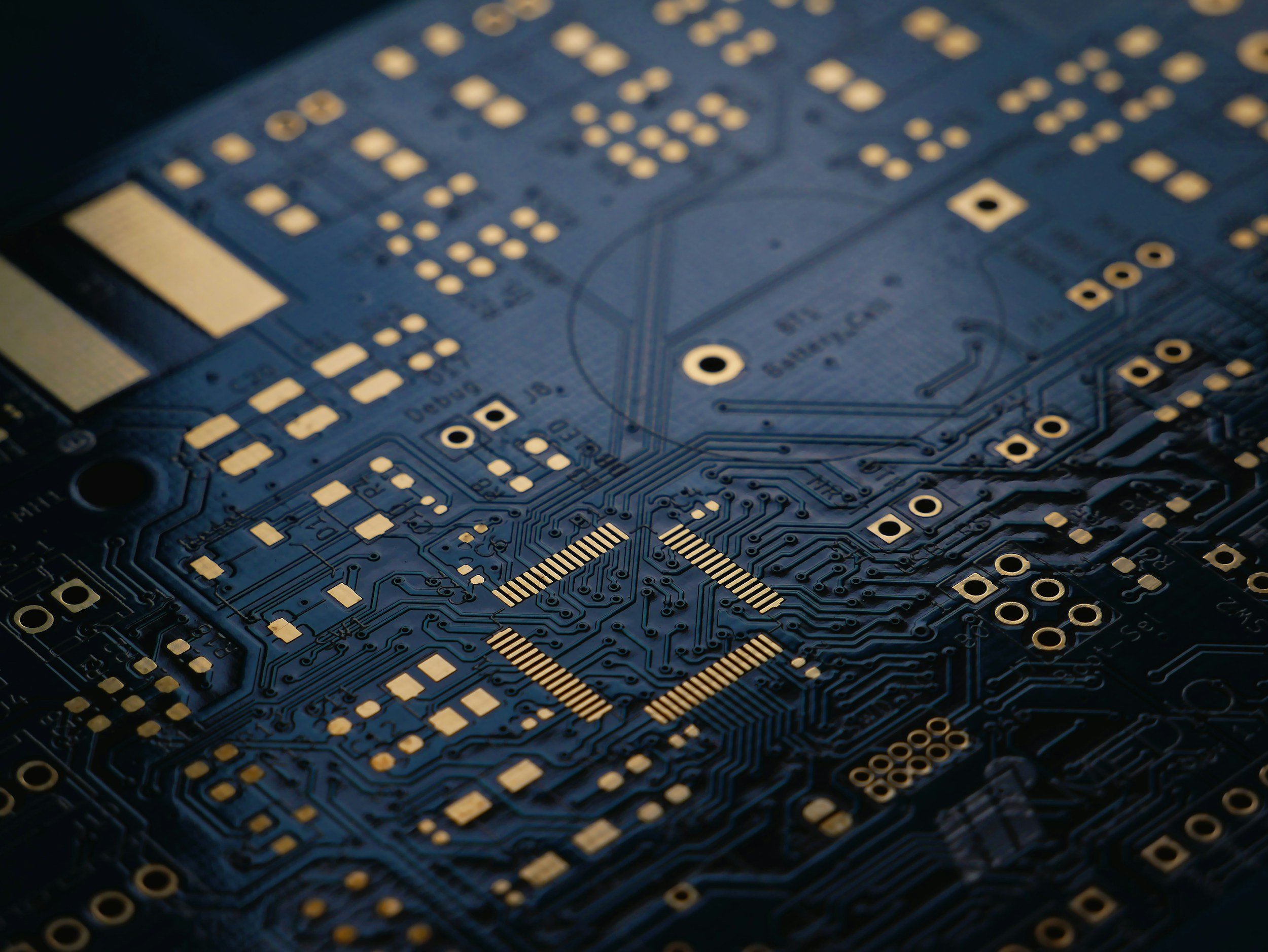Top 10 AI Innovations in Wearable Tech You Must Know in 2024
Image Credit: Daniel Korpai | Unsplash
In 2024, the integration of artificial intelligence into wearable smart devices has led to significant advancements, enhancing user experiences across health, communication, and daily activities. Here are ten pivotal developments in this sector.
1. Solos’ AirGo Vision: Smart Glasses with AI-Enhanced Visual Recognition
Solos’ AirGo Vision smart glasses integrate AI to enhance user interaction with their surroundings. Equipped with a built-in camera, these glasses utilize OpenAI’s GPT-4o model to provide real-time visual recognition, enabling functionalities such as object identification, text translation, and navigation assistance. Users can inquire about visible objects, receive detailed information, and obtain directions to nearby landmarks through seamless voice commands.
The AirGo Vision also supports AI models from Google Gemini and Anthropic’s Claude, offering users flexibility in their AI interactions. This multi-model compatibility allows for a more personalized and comprehensive user experience, catering to diverse preferences and needs.
[Read More: AI Breakthrough: Headband-Style Device Poised to Detect Alzheimer’s Years Ahead]
2. PLAUD.AI’s Meeting Devices: Advanced AI for Multilingual Transcription and Summaries
PLAUD.AI’s devices, the PLAUD NOTE and NotePin, harness AI to revolutionize note-taking and meeting management. These tools integrate with AI models such as OpenAI’s GPT-4o and Anthropic’s Claude 3.5 Sonnet, enabling real-time transcription and summarization of conversations in over 59 languages.
The AI capabilities extend beyond mere transcription; they analyze recorded content to generate concise summaries and mind maps, facilitating quick comprehension and retrieval of key information. This functionality is particularly beneficial for professionals who need to capture and organize information efficiently during meetings, interviews, or lectures.
[Read More: AI Helps You Shed 2kg!]
3. Meta’s Ray-Ban Meta: Iconic Eyewear Redefined with AI Connectivity
In collaboration with EssilorLuxottica, Meta has introduced the Ray-Ban Meta smart glasses, seamlessly blending iconic eyewear design with AI to enhance user interaction and connectivity. These smart glasses are equipped with built-in cameras, microphones, and open-ear speakers, enabling users to capture photos and videos, listen to music, and make calls without the need to handle a smartphone.
A standout feature is the integration of Meta AI, an intelligent assistant that responds to voice commands initiated with “Hey Meta”. This assistant can provide real-time information, set reminders, and answer questions, facilitating hands-free interaction. Recent updates have enhanced Meta AI’s capabilities, including real-time language translation and the ability to offer contextual information about the user’s surroundings.
[Read More: Ray-Ban Meta Smart Glasses Merge Style with Cutting-Edge Tech Amid Privacy Concerns]
4. Humane’s Ai Pin: A Screenless AI Wearable with Projection Technology
Humane’s Ai Pin is a wearable device that leverages AI to perform tasks such as message drafting and language translation without the need for a traditional screen. Operating on a custom system called CosmOS, the Ai Pin aims to reduce screen time by providing information through voice and projection. However, it has faced criticism regarding its functionality.
Users have reported poor battery life, with the device requiring multiple charges throughout the day. Additionally, there are instances of the Ai Pin overheating during use, leading to discomfort and potential safety concerns. The Ai Pin’s AI capabilities have been questioned, with instances of providing incorrect information even during controlled demonstrations, undermining user trust in its functionality.
[Read More: Why GPUs Are the Powerhouse of AI: NVIDIA's Game-Changing Role in Machine Learning]
5. Samsung’s Galaxy Ring: AI-Driven Personalized Health and Energy Management
Samsung’s Galaxy Ring leverages AI to provide comprehensive health monitoring and personalized wellness insights. By continuously measuring metrics such as sleep patterns, heart rate, and physical activity, the ring utilizes AI algorithms to analyze this data, offering users tailored recommendations through the Samsung Health app.
A key feature is the “Energy Score” which combines data from sleep quality, activity levels, and heart rate variability to present an easy-to-understand indicator of the user’s overall vitality. This score assists users in planning their daily activities and managing energy levels effectively.
The Galaxy Ring also employs AI to enhance sleep analysis, providing detailed insights into sleep stages, movement during sleep, and respiratory rates. These insights enable users to identify patterns and make informed adjustments to improve sleep quality.
Additionally, the ring’s AI capabilities extend to menstrual cycle tracking, utilizing overnight skin temperature data to predict cycles accurately, thereby empowering users with valuable reproductive health information.
6. Oura’s Symptom Radar: Early Illness Detection Using AI-Driven Physiological Monitoring
Oura’s Symptom Radar utilizes AI to detect early signs of respiratory illnesses by analyzing deviations in key physiological metrics. The AI algorithms assess changes in resting heart rate, heart rate variability, skin temperature trends, and respiratory rate against individual baselines. Significant deviations trigger notifications, prompting users to prioritize rest and recovery.
Developed in collaboration with institutions like the University of California, San Francisco, Symptom Radar’s AI model was trained on extensive anonymized data, enhancing its accuracy in identifying early physiological strain. The feature operates locally on users’ devices, ensuring data privacy and enabling real-time analysis without reliance on cloud processing.
[Read More: Revolutionizing Mobility: Can AI Exoskeletons Offer New Hope?]
7. Rabbit’s R1: All-in-One Handheld Device with Teach Mode AI Learning
The Rabbit R1 is a handheld device that utilizes AI to perform tasks traditionally managed by multiple apps, aiming to streamline user interactions and enhance efficiency. At its core is the Large Action Model (LAM), an AI system designed to understand and execute complex user requests across various platforms. Unlike standard AI models that generate text responses, LAM interprets user intentions to perform specific actions, such as ordering a ride or booking a flight, by navigating web interfaces and applications on the user’s behalf.
The R1’s AI capabilities are further enhanced by its “teach mode”, allowing users to train the device to perform personalized tasks. By demonstrating a task, users enable the AI to learn and replicate the desired action autonomously in the future, thereby customizing the device’s functionality to individual preferences.
Additionally, the R1 features a 360-degree rotating AI-enhanced camera that facilitates image recognition and contextual responses. For instance, users can point the camera at an object and inquire about it, with the AI providing relevant information or suggestions based on visual input.
[Read More: The Great AI Debate: Is the Hype Justified?]
8. Google’s Pixel Buds Pro 2: AI-Powered Audio Enhancements and Voice Interaction
Google’s Pixel Buds Pro 2 represent a significant advancement in wireless earbud technology, integrating AI to enhance user experience. Central to these improvements is the custom-designed Tensor A1 chip, which enables ultra-low-latency audio processing. This processing power allows the earbuds to adapt to environmental changes up to three million times per second, resulting in Active Noise Cancellation (ANC) that is twice as effective as previous models.
In addition to audio enhancements, the Pixel Buds Pro 2 incorporate Google’s AI assistant, Gemini. This hands-free, eyes-free virtual assistant offers a conversational experience, allowing users to perform tasks such as setting reminders, checking the weather, or managing messages seamlessly through voice commands.
The integration of AI extends to call quality as well. The earbuds utilize beamforming microphones and wind-blocking mesh covers, combined with Google AI algorithms, to enhance voice clarity during calls, ensuring that both the user and the recipient experience clear communication.
[Read More: Pixel Watch 3 Introduces Lifesaving Loss of Pulse Detection Feature]
9. Sennheiser’s Momentum Sport: AI Fitness and Audio Adaptation in Earbuds
Sennheiser’s Momentum Sport earbuds incorporate AI technology to enhance both fitness tracking and audio performance. Equipped with built-in photoplethysmography (PPG) heart rate sensors and body temperature sensors, these earbuds provide real-time health data during workouts. The collected information seamlessly integrates with leading fitness applications such as Apple Health, Garmin Connect, and Polar Flow, allowing users to monitor and analyze their performance metrics effectively.
The AI-driven features extend to audio enhancements as well. The earbuds utilize Adaptive Active Noise Cancellation (ANC) that adjusts to the user’s environment, ensuring an immersive listening experience by minimizing external distractions. Additionally, the semi-open design incorporates acoustic relief channels, which not only enhance wearing comfort by reducing body-borne noise but also improve natural awareness during activities.
10. Mojawa’s HaptiFit Terra: AI Training Headphones with Real-Time Coaching and Feedback
Mojawa’s HaptiFit Terra headphones integrate AI to elevate workout experiences through personalized coaching and real-time feedback. The AI Sports Trainer analyzes user-specific data, including heart rate and exercise performance, to develop customized training plans aligned with individual fitness goals. During activities such as running, swimming, and cycling, the AI provides dynamic guidance, adjusting recommendations based on real-time metrics to optimize performance and safety.
The HaptiFit Terra incorporates haptic feedback mechanisms that provide tactile cues to guide users during workouts, enhancing the interactive experience. The device’s IP68 waterproof rating and durable construction make it suitable for various sports environments, including swimming.
Source: The Verge, Techopedia, Ray Ban, Humane, BBC, XDA, Samsung, The Verge, OuraRing, Rabbit, TomsGuide, Google Blog, Sennheiser Hearing, What Hi-Fi, Mojawa




















